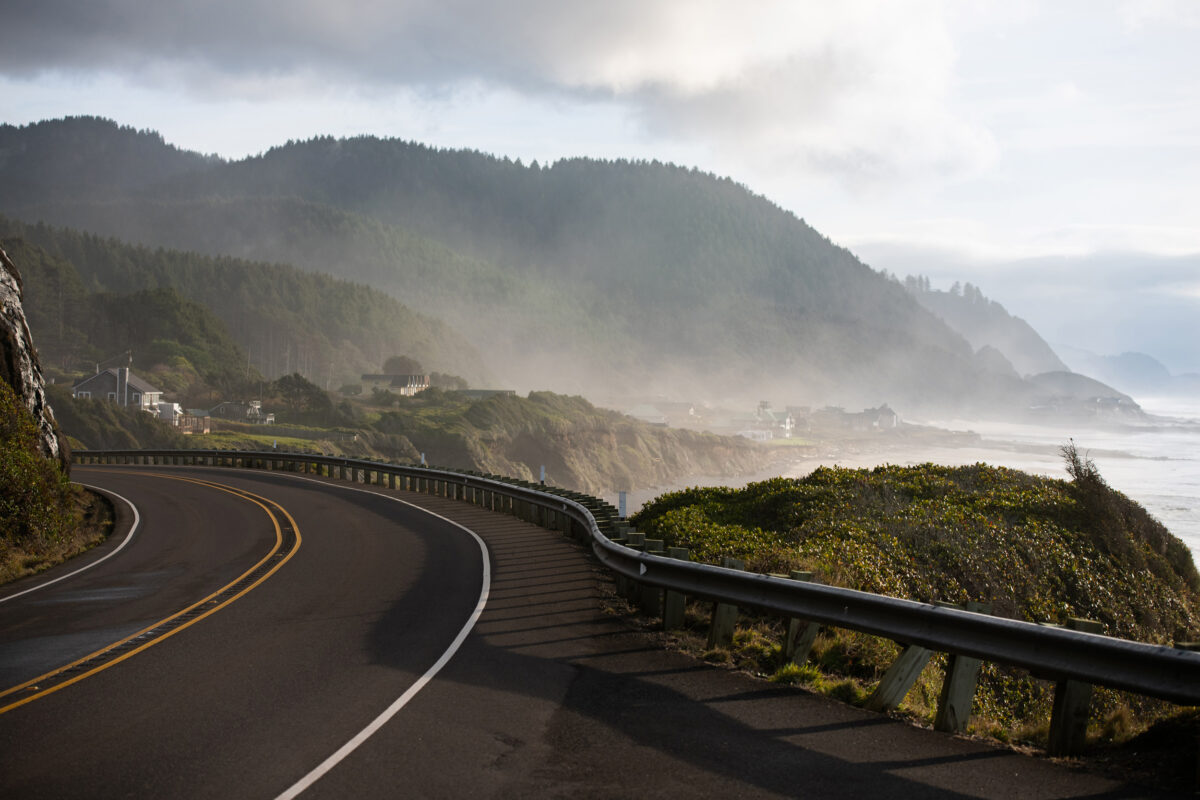Pop culture has long referenced and dramatically predicted the aftermath of “The Big One” hitting California along the San Andreas Fault Line. While you have more than likely heard of California’s “Big One” – have you heard of “The Really Big One”?
A 2015 New Yorker article coined the term “The Really Big One”. This term references the massive “megathrust” earthquake predicted to hit the Pacific Northwest.
So, are Oregon and Washington due for a “Really Big One”?
What is “The Really Big One”?
“The Really Big One” refers to the potential megathrust earthquake due to the Cascadia Subduction Zone along the coast of the Pacific Northwest. Subduction zones occur where there are two plates colliding against each other, causing one plate to descend beneath the other.

The last “really big one” in the Pacific Northwest was a magnitude 9 quake on January 26, 1700. The magnitude 9 earthquake that hit Japan in 2011 is a recent example of a megathrust earthquake. In Japan, the quake and tsunami caused nearly 16,000 fatalities and tens of billions of dollars in damages.
The New Yorker article which gave this potential megathrust earthquake its name, The Really Big One, was authored by Kathryn Schulz. In her article, Schulz explained, “During subduction-zone earthquakes, torrents of land rush off the continental slope, leaving a permanent deposit on the bottom of the ocean.” The article describes how Chris Goldfinger, paleoseismologist at Oregon State University, researched those deposits to determine the average amount of time between Cascadia Subduction Zone earthquakes. This research found that Cascadia Subduction Zone earthquakes have occurred on-average every 243 years. With the last known Cascadia Subduction Zone earthquake occurring in 1700, 321 years have now elapsed. However, these numbers are only averages. Scientists cannot predict with certainty when the Cascadia Subduction Zone will release an earthquake.
Subduction zones create the largest-magnitude earthquakes in history, but they are more rare than quakes generated from surface fault lines.
Earthquake Faults in the Pacific Northwest
It is not just the Cascadia Subduction Zone’s threat of a megathrust earthquake that puts Oregon and Washington at risk for earthquakes. The area also contains surface faults that are capable of generating large earthquakes.
Washington state has dozens of active faults and fault zones and the state experiences very small, unnoticeable earthquakes nearly everyday. Washington is ranked 2nd on the list of top 5 states most at-risk to earthquakes, ranked by population exposed to strong shaking.

The Seattle Fault, running east-west through downtown Seattle and across Puget Sound is an example of a fault that could generate a large (magnitude 7+) earthquake. The latest USGS seismic hazard map calculates that Seattle’s chance of experiencing earthquake damage is as high as much of California, over the 100-year timeframe of the map.
In Oregon, one of the most dangerous fault lines is the Portland Hills Fault. A magnitude 7 or higher earthquake along the Seattle Fault or Portland Hills Fault would cause many injuries and fatalities and extensively damaged or collapsed buildings in surrounding areas.
“It’s likely the next big earthquake we have in Oregon or Washington will be on one of these crustal faults because there are just so much of them,” according to Ian Madin, a senior scientist and earthquake hazard geologist at the Department of Geology and Mineral Industries (DOGAMI).
Measuring Earthquake Risk in the Pacific Northwest
Scientists can’t predict when earthquakes will occur, but they do know that seismic energy builds-up and is released in cycles. This explains how scientists can report that a specific area is due for a large earthquake within a given time frame.
According to the Cascadia Region Earthquake Workgroup, there’s an 84% chance that a magnitude 6.5 or higher earthquake will strike the Puget Sound region within 50 years. In comparison, the Los Angeles area has a 60% chance and the San Francisco Bay Area a 72% chance of experiencing a magnitude 6.7 earthquake in the next 30 years.
How to Anticipate Megathrust Earthquakes
Scientists can also identify times when there is an increased risk, even if they cannot predict exactly when an earthquake will strike. For example, before the magnitude 9 megathrust earthquake hit Japan in 2011, scientists noticed two days of unusual activity in the location that the earthquake started. First, a magnitude 7.3 earthquake struck in the megathrust zone. Then, there was a series of seismic activity known as “slow earthquakes,” because as the name suggests, the movement of fault surfaces and the release of energy occurs more slowly than normal quakes. This activity is now thought to have been hints that the megathrust earthquake was coming. As a result, Japanese scientists placed new stations on the seafloor to better understand and monitor activity in that location before another potential large quake. Japan is currently working on placing 150 observatories along over 3500 miles of powered cable at a cost of approximately $320 million.
Dangerous Uncertainty of the Cascadia Subduction Zone
Compared to other subduction zones, Cascadia is “eerily quiet”, explains Kelin Wang, a seismologist at the Geological Survey of Canada in Sidney, British Columbia. The Cascadia Subduction Zone experiences very few small quakes or other activity that could give scientists insight on how the tectonic plates are moving. This increases the dangerous uncertainty around whether or not the Cascadia Subduction Zone is preparing for a megathrust earthquake.
Will another big earthquake hit the Pacific Northwest? Yes. It’s not a matter of if, but when. The Pacific Northwest is commonly known to be the most dangerous earthquake hotspot outside of California. So while the San Andreas Fault Line is a well known danger to Californians, Pacific Northwesterners also need to be prepared!
Stay Tuned! In part 2 of this blog, we will dive into what is occurring at the Cascadia Subduction Zone in more detail and explain why it is so dangerous to residents in Oregon and Washington.



